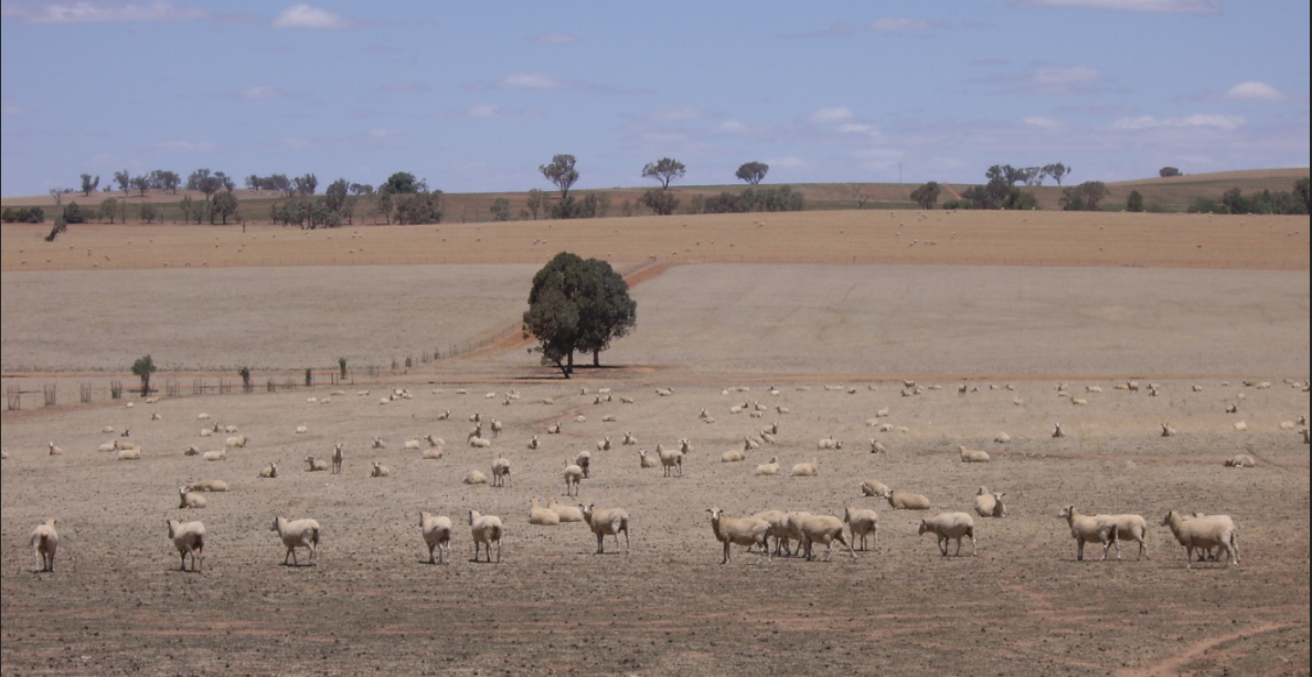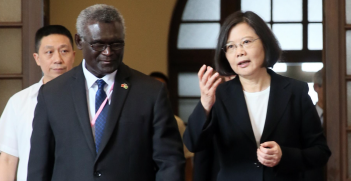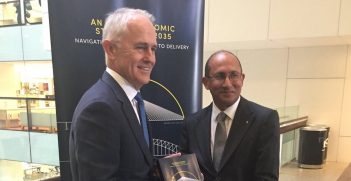Don’t Divert Foreign Aid Spending to Drought Relief

Moving aid money to drought relief presents a simplistic and flawed solution that would diminish Australia’s influence in the region.
In ancient Greece the sophist philosophers were known for their fallacious arguments. On the surface, the linkages they made seemed plausible, even reasonable, but on closer examination the logic they employed was faulty and it fell apart on closer inspection.
If sophists were to survey current social media debates that link drought relief with cuts to foreign aid, they would be quite comfortable. Arguing that the aid given to developing countries should be diverted to support farmers and regional communities is sophistry unchained. Moving aid money to drought relief presents a simplistic and flawed solution. It is a xenophobic response that would diminish Australia’s influence in the region.
Minister for Foreign Affairs Julie Bishop and Minister for Agriculture David Littleproud have quite rightly spoken against this idea. Bishop views aid as part of the responsibility of developed nations, and she links it with protecting Australia. Littleproud notes that AUD 300 million in aid to Indonesia needs to be weighed up against AUD 3 billion in gains from trade with Indonesia. Soft power and trade are both good reasons to continue to give aid.
The drought
The drought affecting Eastern Australia is severe. On 1 August 2018, Queensland’s Government declared 57.4 per cent of the state drought affected. The New South Wales Government says the entire state is suffering: intense drought (21.1 per cent), drought (45.7 per cent), drought affected (33.1 per cent), recovering (0.1 per cent) and non-drought (0.0 per cent). The full social and economic costs of crippling drought will not be known for some time.
Both state and federal governments have provided emergency funding. By mid-August the NSW Government had announced AUD 500 million in drought relief. Over the past five years, successive Queensland governments have provided AUD 670 million to support farmers, while by 5 August the Federal Government had announced AUD 1.8 billion to support the farm sector.
The agricultural sector is the lifeblood of rural Australia; it is imperative that affected communities and families receive as much support for as long as they require, as food security is essential for the future. We cannot allow a situation where the farm sector is put out of business, but neither should we succumb to a flawed logic that says we have to take money from aid to help farmers.
The aid budget
Aid is a tool of statecraft. It forms part of a state’s potential soft power. It reflects a state’s capacity to project influence in a non-military way. The review of Australia’s soft power announced on 14 August will include the aid program. There are several reasons why giving aid is good for Australia. It provides health and education services that help to build prosperity and security for our neighbours. Aid contributes to stronger regional growth and stability, which means greater security and more people with money to buy Australian products.
Australia remains the largest donor in the Pacific region, but Australian aid spending has declined since the Abbott Government. In global terms, the United Nations recommends developed states give 0.7 per cent of their Gross National Income, but Australia currently gives about 0.22 per cent, less than one third the recommended level. Aid spending is at historic lows and further cuts to the aid budget might allow other nations, particularly China, to take a more active role in the Pacific region.
The Department of Foreign Affairs and Trade (DFAT) has a budget of AUD 5.8 billion, but to find actual aid dollars you have to remove DFAT’s other agency responsibilities. Outcome 1 involves promoting Australia’s interests abroad and has a budget of AUD 5 billion for: maintaining and staffing Australian embassies and consulates; official development assistance (ODA); multilateral replenishments; payments to international organisations; New Colombo Plan; and Public Information. Remove day-to-day DFAT embassy and consulate operations, dues paid to the UN and other international organisations, funding for Australian students to travel and administrative overheads, the total aid figure is AUD 3.2 billion.
Forget about supporting corrupt governments; there are no cash transfers in aid and have not been since the 1980s. Most Australian aid goes to private companies, many of which are Australian. They deliver services in education, health, governance and other areas through bilateral aid (AUD 1.65 billion), cross-cutting regional programs to the Pacific or SE Asia (AUD 758 million) and supporting global programs (AUD 398 million).
Australia gives most of its aid to its immediate region and mostly to its closest neighbours, Papua New Guinea (PNG) and Indonesia. The top three recipients in the Pacific are PNG (AUD 546.3 million), Solomon Islands (AUD 142.2 million), and Vanuatu (AUD 69.8million). In Southeast Asia, it is Indonesia (AUD 356.9 million), Timor Leste (AUD 96.1 million) and Cambodia (AUD 87.4 million). The Pacific region in particular is vital for Australian security, while Southeast Asian states, including Indonesia, are in our top 15 trading partners. Giving aid makes good economic, political and moral sense.
Actual aid spending represents a very small overall part of the estimated 2018-19 budget of AUD 488.58 billion. The aid to total government/budget ratio is 0.0068 per cent, while Australia spends AUD 175.97 billion (36 per cent) on social security and welfare, AUD 78.83 billion (16 per cent) on education, AUD 34.74 billion (7.1 per cent) on health and AUD 31.22 billion (6.3 per cent) on defence. Aid is a small price to pay to have some influence in our region.
Thinking better
Governments are not businesses. They can spend money they do not yet have. Deficit spending has been done before — think of the Global Financial Crisis — and a prolonged crisis such as the drought may require special measures, including an unbalanced budget. If that is totally unthinkable, why not small cuts from all ministries to support the vital farm sector? Why attack an already crippled aid program and reduce regional influence?
The drought is a national emergency and it merits and is getting a serious response. But to demand foreign aid cuts to support Australia’s agricultural sector appeals to the ‘dark angles’ that have too often permeated the Australian national psyche. A Trumpian retreat to the insularity of “Australians First” would detract from the carefully-crafted narrative of Australia as a dynamic, multicultural and regionally-engaged state.
Dr Charles Hawksley is senior lecturer in Politics and International Studies at the University of Wollongong and a member of Academic Stand Against Poverty (ASAP) Oceania.
Dr Nichole Georgeou is senior lecturer in Humanitarian and Development Studies at Western Sydney University and a co-chair of Academic Stand Against Poverty (ASAP) (Oceania).
This article is published under a Creative Commons Licence and may be republished with attribution.





